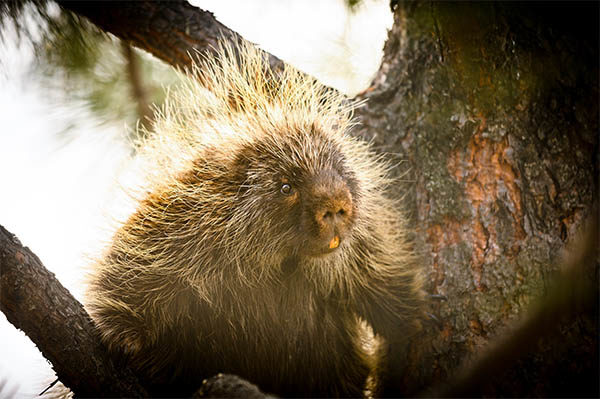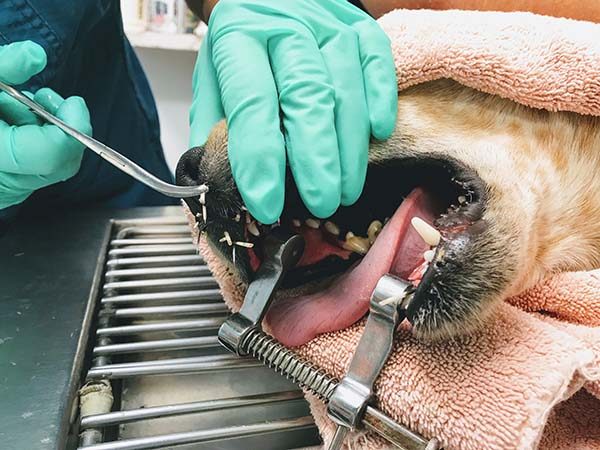
Training and fieldwork create a special bond between dog and owner. But our four-legged friends often find themselves in situations where they need our help. Our new Ask a Vet series delivers advice directly from a professional, working veterinarian. Have a question about your dog? Shoot an email to themeateater@themeateater.com and we’ll dig into the concern.
“I haven’t had to pull porcupine quills out of my dog’s face yet, but I know it’s only a matter of time. Recently, I became the owner of a dog with high prey drive. What do I need to know about porcupine interactions with my dog? Can I DIY the quill removal, or is a vet always needed?” -Morgan Mason, MeatEater associate editor
If you spend enough time in the uplands, you’re almost guaranteed to encounter a porcupine. These critters can be found throughout the American West and from the Great Lakes and Northeast all the way to Alaska. These giant rodents seem to prefer the same dense cover that pheasants and other upland species love to hide in. Their calm confidence in the face of predators only fuels the fatal attraction that tempts high-drive hunting dogs to sink in their teeth.
During the peak of upland season, I field a lot of after-hours phone calls about whether an encounter warrants veterinary intervention. The most important piece of advice is to take action. Don’t wait a couple days before deciding to call—come in or pull them. Even waiting overnight allows for inflammation to set in, making the quills much harder to remove and significantly more likely to get infected.
A good rule of thumb is that quills in or around the eyes or mouth should be addressed by a veterinarian. The risk of complications and infection is much higher in these cases. Stealthy quills can hide under the tongue or in the back of the throat, leading to severe complications.
I also ask owners about their dog’s temperament. The anxiety and discomfort of a porcupine encounter can quickly turn the most loving lap dog into a fear biter. Your goal as a bird dog handler should be to protect yourself first.
On more than one occasion I’ve seen well-intentioned owners bitten by their own dogs, resulting in more serious injuries than those inflicted by a face full of quills. With a little IV sedation, your veterinarian can safely restrain your bird dog and perform a much more thorough job of removing quills. When in doubt, knock them out.
If the encounter is moderate with no quills in the mouth, deep in the nose, or around the eyes, and your dog is cooperative, field medicine is completely appropriate. You don’t need much more than a good pair of needle-nose pliers or a multi-tool, which you should always carry in an upland pack.
If you have a hunting buddy available, have them jump in to remove quills while you restrain the dog. I carry a cheap slip lead in the bottom of my pack that doubles as a muzzle while pulling quills. Slide the loop over the dog’s nose and mouth like a lasso (away from quills, if possible) and cinch it tight to protect yourself from a bite. In a pinch, your belt works pretty well, too.
While the dog is restrained, position the pliers close to the skin and pull straight, slowly, and steadily. Resist the urge to jerk them out, as this often contributes to breaking off the shaft of the quill, leaving the point in the skin.
Thanks to the free and dubious advice of Dr. Google, I’ve heard my share of alternative techniques for quill removal. Almost all of them cause more problems than they correct. To lay a debate to rest once and for all: Don’t cut the quill.
As someone who has pulled tens of thousands of quills out of dogs, I can attest that there’s no advantage to this technique. Some of my colleagues share stories of clients soaking the quills in water or lathering them in coconut oil, two well-meaning but flawed strategies that ultimately make it harder for veterinary staff to remove later.
At our clinic, we have a deep log of cautionary tales of migrating quills, giant infections, and expensive surgeries, many of which could have been prevented with proper technique and seeking help in a timely manner. We once spent the better part of a hunting season treating a Brittany with festering quills from a valiant but hopelessly flawed DIY job the owner hoped would heal on its own.
If you need to settle a bet with your hunting buddies as to the bird dog breeds most likely to munch on a porcupine, German wirehairs are the most common offender, followed closely by German shorthairs. And to answer the age-old question of whether dogs ever learn their lesson, I offer a resounding “no.” We commonly see the same dog back each season.
In fact, I’m very familiar with a particular black GSP that seems convinced she’ll get the upper hand on those porcupines one day, even though the last four rounds haven’t quite gone her way.






